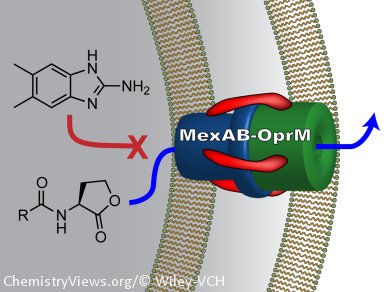Quorum sensing is an important form of cell–cell communication for bacteria. By disrupting this process through the use of N-acylated L-homoserine lactones (AHLs), the natural substrate of the LuxR receptor, the formation of harmful biofilms can be avoided.
New information about bacterial resistance to small-molecule derivatives of AHLs from Helen E. Blackwell and colleagues, University of Wisconsin-Madison, Madison, WI, USA, reveals that an efflux pump known as MexAB-OprM can export derivatives of AHL from the interior of the bacteria, which allows a biofilm to develop. When MexAB-OprM is deleted, the cells once again become sensitive to the action of AHL. These studies, done in Pseudomonas aeruginosa, a bacterium common in immune-compromised patients, uncover an important mechanism for bacterial antibiotic resistance.
Another quorum-sensing and biofilm inhibitor, 5,6-dimethyl-2-aminobenzimidazole was not sensitive to the presence of the efflux pump and thus, represents an important lead for future development of quorum-sensing modulators and to fight the growth of biofilms.
- Active Efflux Influences the Potency of Quorum Sensing Inhibitors in Pseudomonas aeruginosa,
J. D. Moore, J. P. Gerdt, N. R. Eibergen, H. E. Blackwell,
ChemBioChem 2014.
DOI: 10.1002/cbic.201300701




